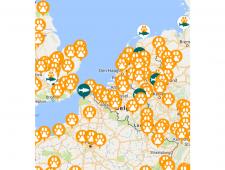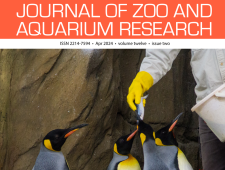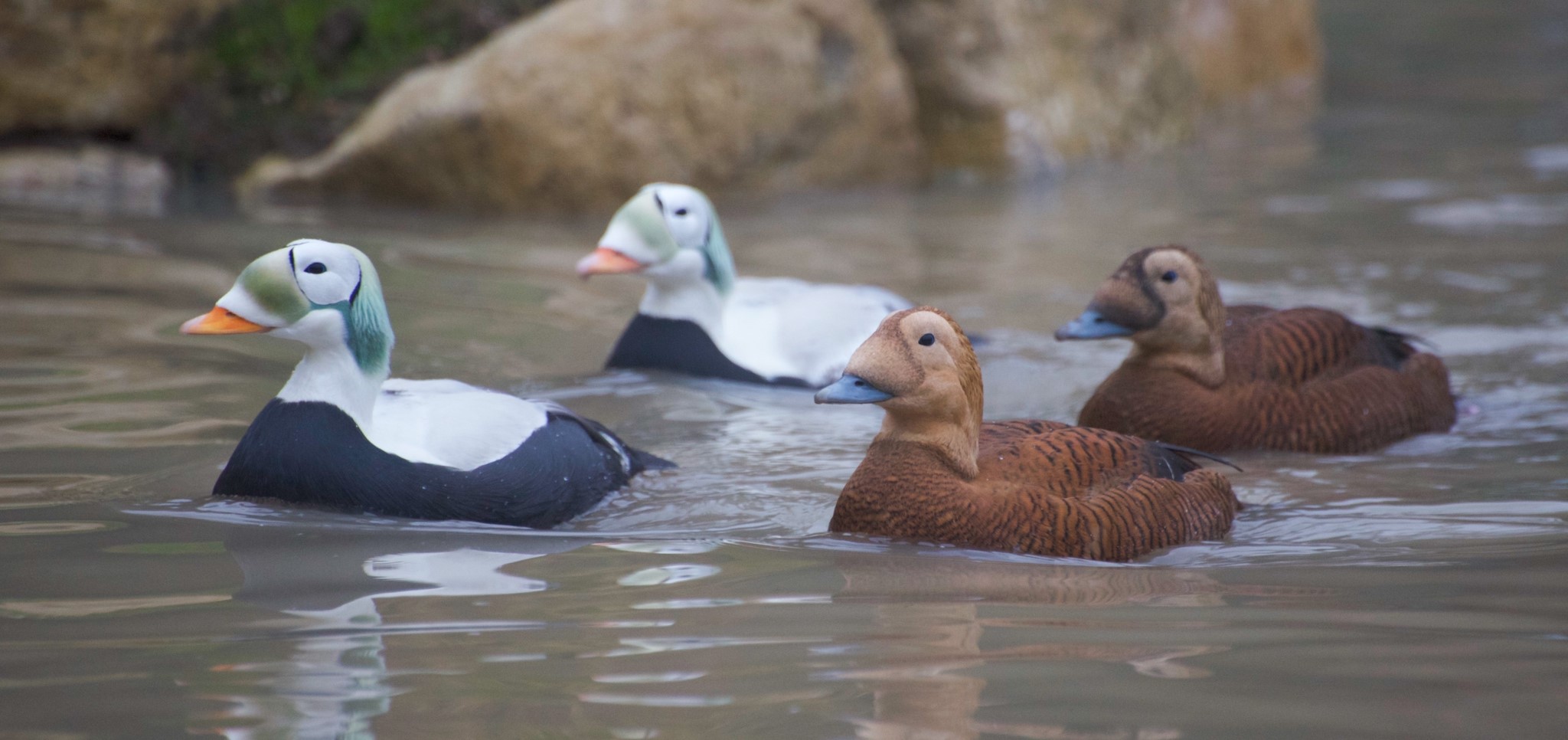Seaduck
(Somateria, Histrionicus, Melanitta, Clangula and Polysticta spp)
Coordinator: Sam McKinlay
Institution: Paignton Zoo
Programme roles
| • Conservation education Sea ducks are highly threatened by climate change, pollution, overfishing and unsustainable farming. These species can be used to teach visitors about the dangers of threats to sea duck species. |
|
| • Research (husbandry) Several species grouped together under the Seaduck EEP have husbandry issues such as water quality and rearing, that requires more research. Additionally, existing resources and knowledge will be combined to produce Best Practise Guidelines for the sea duck species. • Model species Several species under the Seaduck EEP are already being held in institutions despite having challenges. Species successfully kept can act as model species for other species grouped under the Seaduck EEP. |
|
Programme partners
Programme numbers
In March 2019, the Seaduck EEP had 246 animals in 43 institutions.
Eider (Somateria): 216 animals in 37 institutions
harlequin duck (Histrionicus histrionicus): 23 animals in 5 institutions
Scoter (Melanitta) currently not kept in EAZA
long-tailed duck (Clangula hyemalis): 7 animals in 1 institution
Steller's eider (Polysticta steller) currently not kept in EAZA
Programme highlights
- The IUCN SSC Threatened Waterfowl Specialist Group has an active Facebook group.
- The waterfowl and Pelecaniformes TAG Chair gave a presentation about the TAG at the 2020 Waterfowl Conservation Workshop. You can see the PDF file here to learn more about the TAG and programmes under their remit.
- For more information about the EEP Coordinator and the EEP please click here.
- EAZA published its 2021 Annual TAG Report.
- WWT has a developed guide to sea duck identification.







